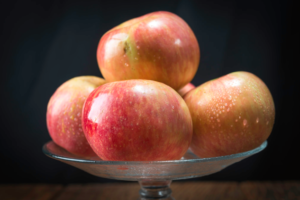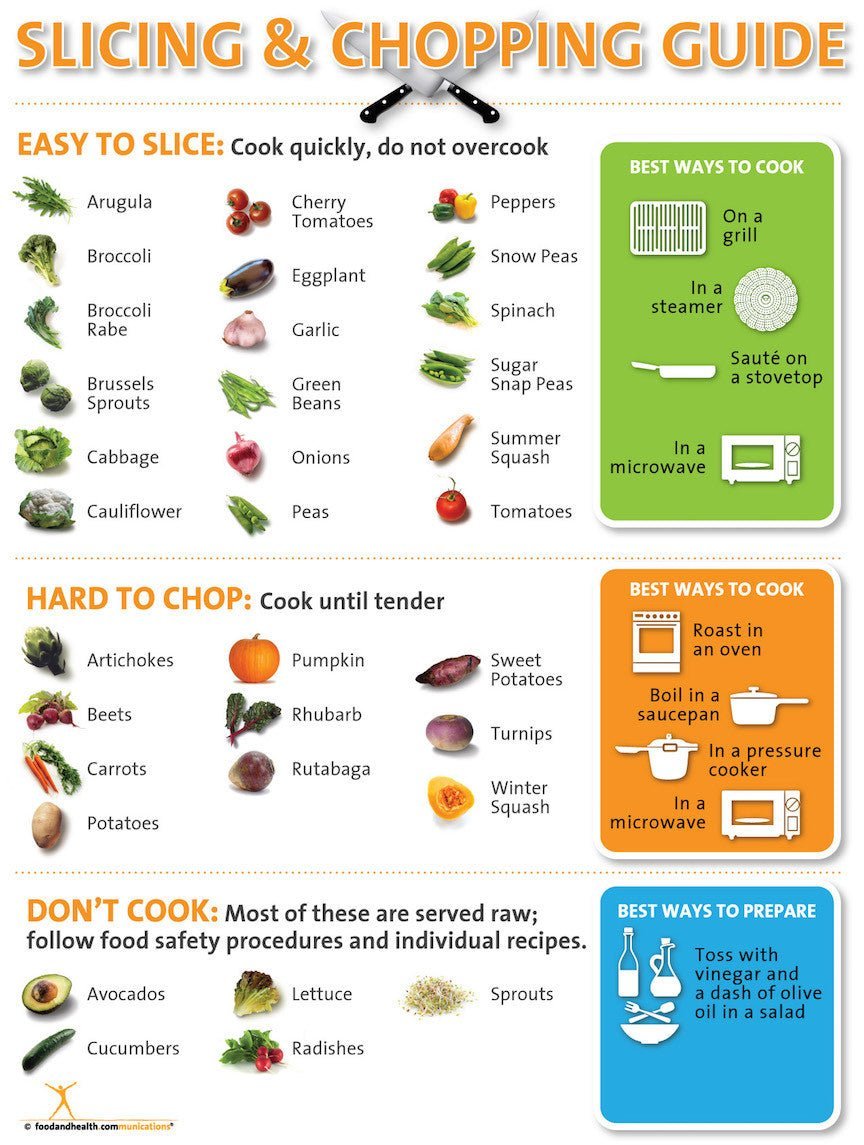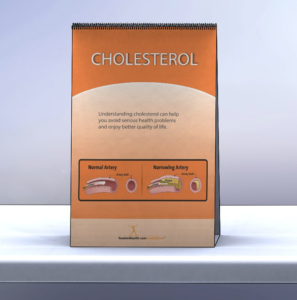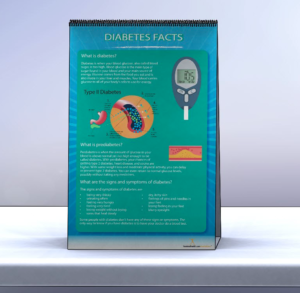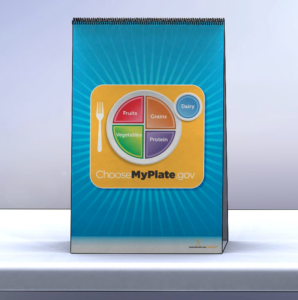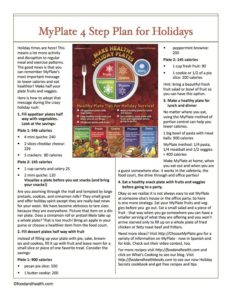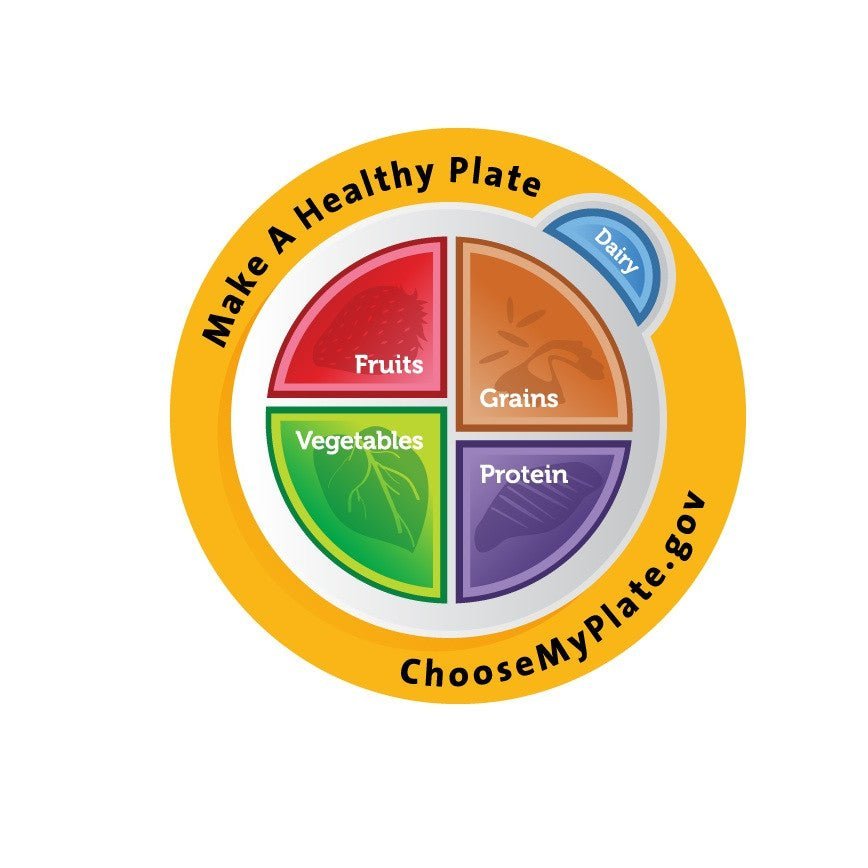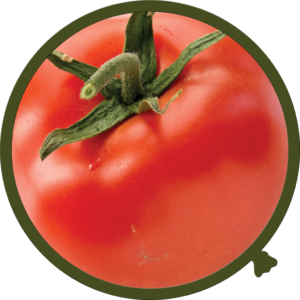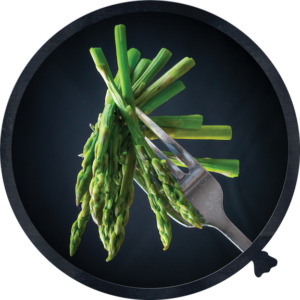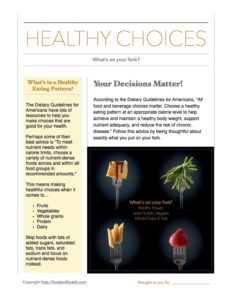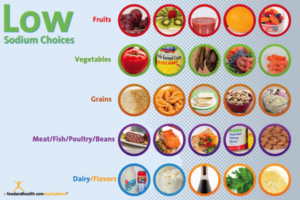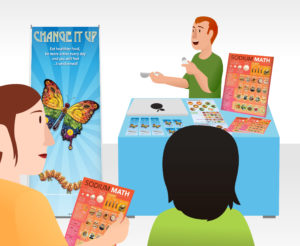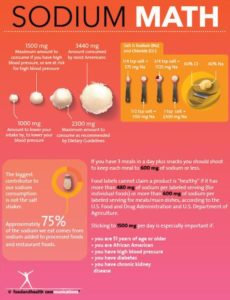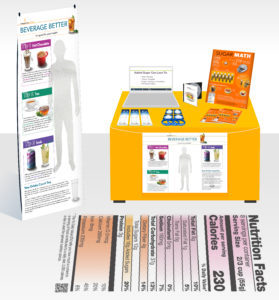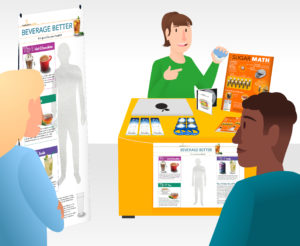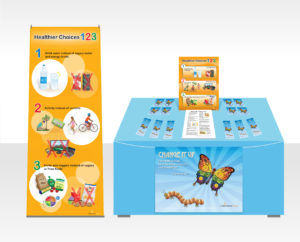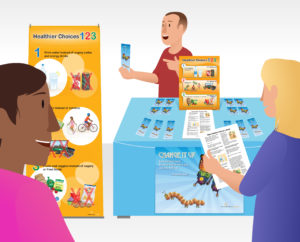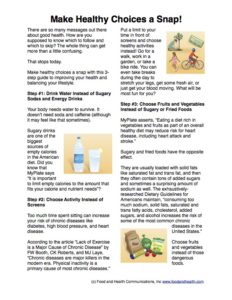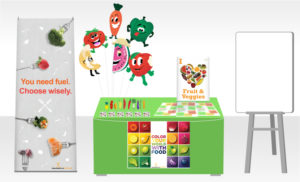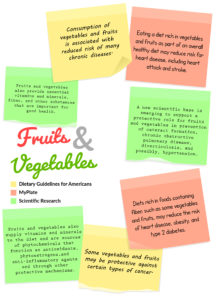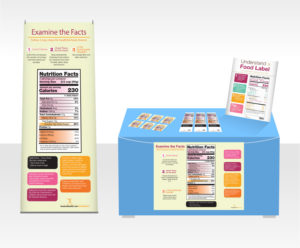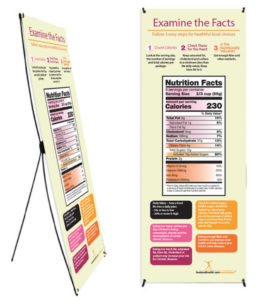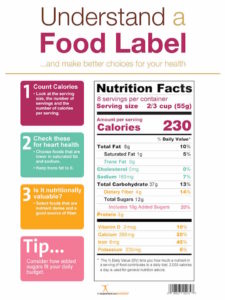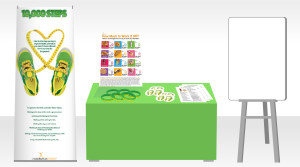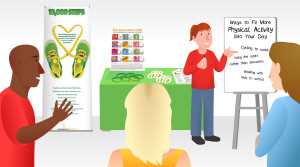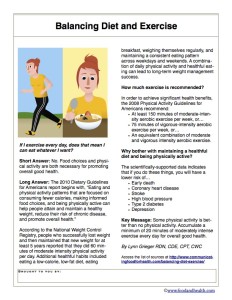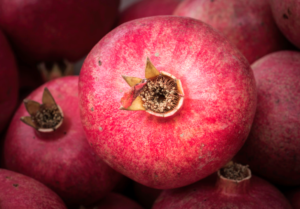 Adding a bit more fruit to an eating pattern is a great way to squeeze in a bunch of nutrients without excess calories, but some fruits are higher in calories than others. In fact, some fruits are even processed in such a way that they come with a boatload of empty calories and added sugars.
Adding a bit more fruit to an eating pattern is a great way to squeeze in a bunch of nutrients without excess calories, but some fruits are higher in calories than others. In fact, some fruits are even processed in such a way that they come with a boatload of empty calories and added sugars.
Help your audience navigate the fruit landscape with this quick and pretty display of fruit.
Arrange the following items in a highly-visible part of your space and make cards that list the calorie content of each item. For an activity, have people match the cards to the fruit. For a non-interactive display, simply place each card by the fruit it describes.
- 1 fresh apple: 71 calories
- 1 cup apple juice: 116 calories
- 1 cup canned peaches in juice: 160 calories
- 1/2 cup raisins: 216 calories
- 1 cup canned peaches in heavy syrup: 251 calories
This display will show participants that dried fruit and canned fruit in heavy syrup are much higher in calories than their less-processed counterparts.
- To add more depth to the display, note the fiber content of each item. This is especially useful when comparing the apple and its juice, since a whole apple contains almost 3.5 grams of fiber, while the juice does not contain any fiber at all.
- For a temporary display or discussion, place actual servings of all the fruit in this list in glass containers on a table. For a more lasting display, use images, food models, or empty packages instead. This can be done on a table or a bulletin board.
- Instead of comparing total calories or calories per serving, you could also compare sugars, highlighting hidden sources of added sugars in each food.
For other great fruit activity and display ideas, don’t miss these amazing materials!




